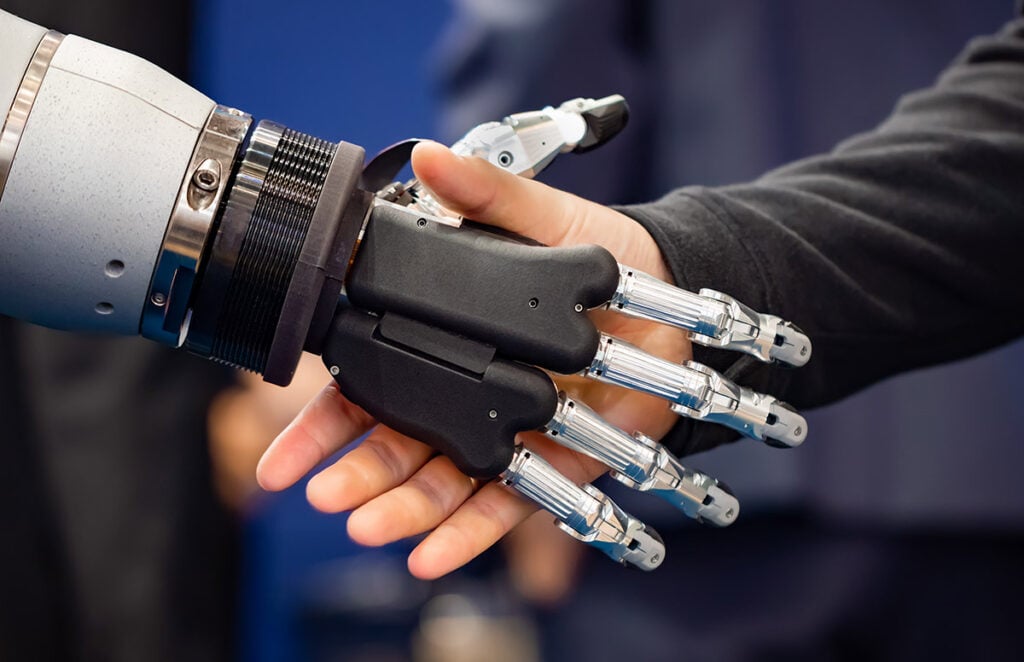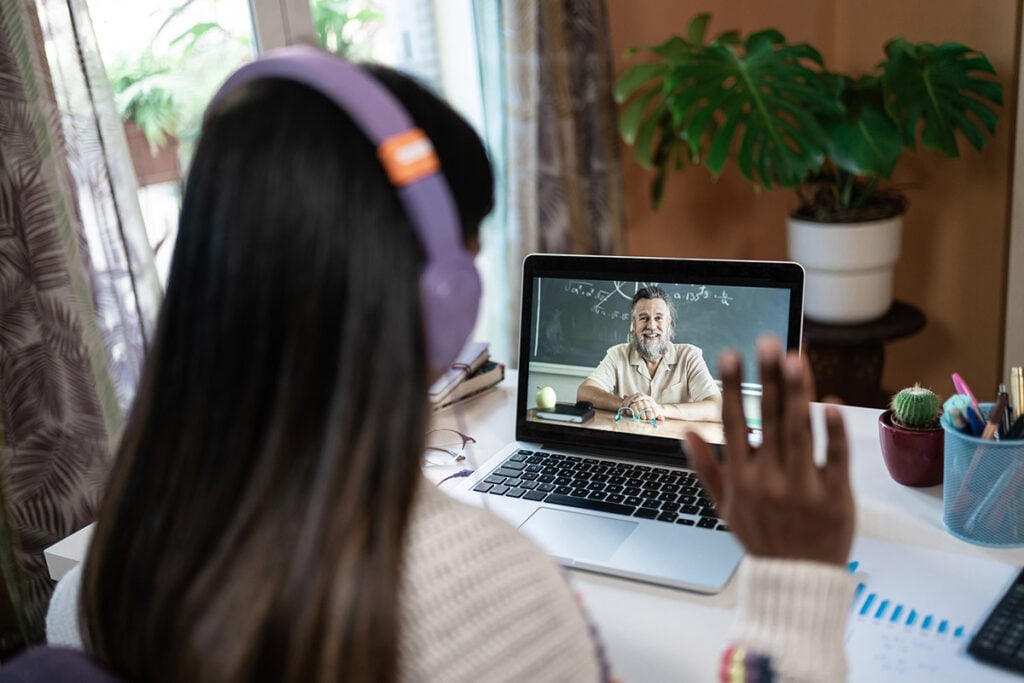The Real Deal on ASL Tech and Apps
ASL - Interpretation - Sign Language - The more you know - Food for thought

Every few months articles and imagery featuring a young engineer, confidently smiling while wearing a futuristic contraption on their hands makes the rounds. Headlines like “Give a hand to this new wearable glove that translates sign language into real speech” and “This new high-tech glove translates sign language into speech in real time” draws readers in with the solution to universal communication for the Deaf.
A conversation not taking place enough around these technologies and articles is – who exactly are these tools helping? By positioning disability as a problem and having little to no understanding of Deaf Culture, a lot of these young technologists inadvertently propagate hurtful ableist perspectives.
In this article we’ll layout The Real Deal on ASL Tech and Apps, explaining how some of these tools cause harm and provide you with better perspectives and tech to foster more helpful communication and connection with Deaf individuals.

To Glove…or not to Glove
You spot that Deaf customer at Starbucks…you want to compliment the stylish pair of shoes they wear, but don’t sign ASL, have a phone, or pen and pad on you. If only you could wire and fit a sign language glove unit on to them so you could pay the compliment forward.
Sound familiar?…Well we hope not.

Ostensibly you’d think the impetus behind a lot of the developments in ASL gloves comes from an authentic want for equity in communication. As you sift through the countless, yearly grant- winning stories it becomes clear that this fascination is closer to “how can a glove turn the characters of the fingerspelled ASL alphabet in to something audible”.
The challenge is at face value just a kinetic and gestural conversion of the 26 letters that make up the written/ASL alphabet. Sign Language is a complex 3d language with accents, grammar, inflection, classifiers, facial expressions, body positioning and more. And we aren’t even talking about the non-English signed languages throughout the globe.
So now that we’ve laid out how severely these technologies miss the mark, we’ll break down their core flaws and failures below. Take notes!

Where the Gloves Do Wrong
1. The ASL Alphabet and Individual Signs Alone are Not Sign Language
The most apparent failure in most of these clickbait projects is that the technologist is setting out to only interpret the 26 letters of the American English alphabet. Some instances of these projects incorporate basic words that the gloves can pick up, forcing the user to communicate in Signed Exact English (SEE). SEE is not American Sign Language.
There are an estimated 10,000 distinct signs in American Sign Language – but there are over 171,000 English words. These 10,000 distinct signs can be manipulated by non-manual markers, which these gloves cannot pickup.
Researchers tend to overlook this easily googleable fact when they start developing these projects.
2. Lack of Deaf Community Involvement in the Technology
The gulf that can happen in engineering schools between diversity in student bodies, cultural understanding and tech is all too common. With the humanities often times being last on the rung in tech education, creating apps or tech without a people first approach can be the unintended result.
How many of these professors that underwrite these projects are Deaf? How many Deaf fellow students in these teams are chiming in with critical opinions? What effort is being made to first find out what this community needs? These are all serious questions to consider and reframe your perspective.
To serve or create on behalf of a marginalized community, you must put them at the forefront of your approach and development.
3. Viewing Disability as a Problem to Solve
This complex and painful problem connects to the previous point. Without a connection or understanding of a community and an unchecked ableist worldview, you may view Deaf people as a problem that need fixing…as people that need to function to your audist requirements.
Learn more about ableism and its systemic integration in to society from disability rights activist and author Alice Wong here.
4. Othering and ostracization through tech
When we don’t design with the intent to include…we exclude. Think about stairs-only entrances at that music venue, that wheelchair bathroom with an entrance too narrow for a wheelchair, or the train station with audio only announcements. These are design oversights from teams that weren’t working inclusively or with integrated team members from disabled communities.
Why create a space or technology that leaves people out or makes them feel bad?
The next point is less about fashion and more about intent and function. It’s quite the offense to think it’s ok to load up a Deaf or Hard of Hearing individual with a series of wires and gloves just so they can order a pizza from a hearing person. Not cool.
Check out this video of inclusive design for games for a good example of empowering tech created in tandem with disabled gamers:
5. Impractical
A few seconds on a Shark Tank panel might crack one of the most apparent commercial problems with the sign gloves – distribution and cost.
Are these to be distributed nationwide to Deaf individuals? Should bars and restaurant servers have a pair at the ready to place on their Deaf patron? How much does it cost to manufacture, develop and upkeep software that can allow the above mass distribution to America’s Deaf population?
So What Tech, Apps, and Approaches Work?
There are some incredible tools and tech out there to help create accessible spaces and foster communication between Deaf and Hard of Hearing individuals that use sign language and hearing people.
We’ll explore everything from low tech approaches to some of our favorite apps.
Read, Watch and Listen
This one is your gateway. The best way to get an initial sense of the history, diversity and inequities that Deaf people face in America and across the world is through literature and visual media. There are excellent books like Deaf in America: Voices from a Culture and For Hearing People Only that can help one orient themselves.
Documentaries like SIGNING BLACK in AMERICA can open your eyes to the rich linguistic and cultural diversity in the Deaf community. Listening to talks and conversations from Christine Sun Kim, Matt Maxey, and Isidore Niyangabo can help deepen your appreciation for the language.
Sign up for a local or online ASL class
In the time it takes to build and develop that ASL glove you could sign up for an ASL class. With record setting interesting sign language thanks to Marvel films and TV shows featuring it, why not see what’s offered online or locally?
Check out the National Association for the Deaf’s comprehensive list for online ASL learning here.

Notes App on your Phone
Think of this as a high-tech version of the old school pen and pad. You have a customer, peer or traveler that you’d like to assist or communicate with? Pull out a pre-loaded Notes file with enlarged font and get to texting.
Vetted Apps and Channels
Skip the gimmicky aps that might sell the idea of in your pocket ASL translation. Start with good learning tools like The ASL App or immerse yourself in the web and video lessons of ASL theorist and technologist Dr. Bill Vicars.
Access Interpreter Resources
Learn how to access reliable interpreting support for your Deaf family, friends, or peers. If these services are lacking in your community or campus and you want to support Deaf people, then step up and learn how you can become an ally that advocates for communication access.
So what have we learned?
Hopefully this breakdown dispels some of the danger and misinformation around a lot of the glove-based tech surrounding ASL. Remember, creating accessible spaces requires reciprocity in communication – which these gloves inherently lack.
More access to qualified interpreters, implementation of the Americans with Disabilities Act in America, and a willingness to learn and communicate is what can create a more equitable world.
Take it from Deafies in Drag. Before you go invent that glove or repost that story on your Linkedin – do your research!



